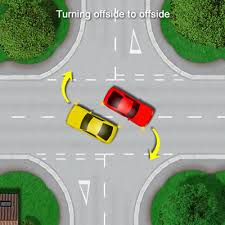
What is Nearside of a Car? A Clear Explanation for Drivers
If you’ve ever read a car manual, MOT test report, or insurance document, you’ve probably come across the term “nearside of a car.” But what does it actually mean? Whether you’re a new driver or just brushing up on motoring terminology, understanding this concept can help you avoid confusion — especially when dealing with repairs or road safety.
In this guide, we’ll break down what nearside of a car means, how it differs from the offside, and why it’s important to know the difference.
Nearside vs Offside – What’s the Difference?
-
Nearside of a car (NS): This refers to the side of the vehicle that’s closest to the kerb or pavement.
-
Offside of a car (OS): This is the side of the vehicle that’s furthest from the kerb, typically the driver’s side in the UK.
A simple way to remember it:
-
In the UK (where cars are right-hand drive), the nearside is the left side (passenger side).
-
In countries with left-hand drive cars, the nearside is the right side (also the passenger side).
Why Does Knowing the Nearside Matter?
Understanding which side of the car is the nearside can be surprisingly important in everyday driving and vehicle care:
-
MOT and Repair Reports – Mechanics often note defects as “NS front tyre worn” or “OS rear brake light out.” Knowing the terms helps you act quickly on repairs.
-
Insurance Claims – After an accident, insurers may describe damage by nearside or offside.
-
Driving Awareness – The nearside is closer to pedestrians, cyclists, and parked cars, so extra caution is needed.
-
Tyre Replacement – Tyre rotation guides often specify nearside or offside wheels.
Common Situations Where Nearside is Used
-
Parking Instructions: “Check your nearside mirror when pulling in.”
-
MOT Advisory Notes: “NSR tyre close to legal limit” (nearside rear tyre).
-
Highway Code References: When overtaking or passing cyclists, drivers are often reminded to be aware of their nearside.
Tips to Easily Remember Nearside
-
Think: Near = Kerb. The nearside is the side nearest the pavement.
-
Imagine sitting in the passenger seat — you’re always on the nearside.
-
For quick recall: Near = Passenger side | Off = Driver’s side (in the UK).
FAQs About Nearside of a Car
Q1: What is nearside of a car in the UK?
The nearside is the left-hand side of the car, closest to the kerb.
Q2: What is the offside of a car?
The offside is the driver’s side (right side in the UK), furthest from the kerb.
Q3: Does nearside mean the same worldwide?
Yes, the principle is the same: it’s always the side nearest the kerb, but whether that’s left or right depends on the country’s driving system.
Q4: Why do garages use terms like NS and OS?
It standardises reporting and avoids confusion when describing faults or repairs.
Conclusion
So, what is nearside of a car? Simply put, it’s the side closest to the kerb — usually the passenger side. While it may sound like jargon, knowing the difference between nearside and offside can make a big difference when reading MOT reports, dealing with insurers, or improving your road awareness.